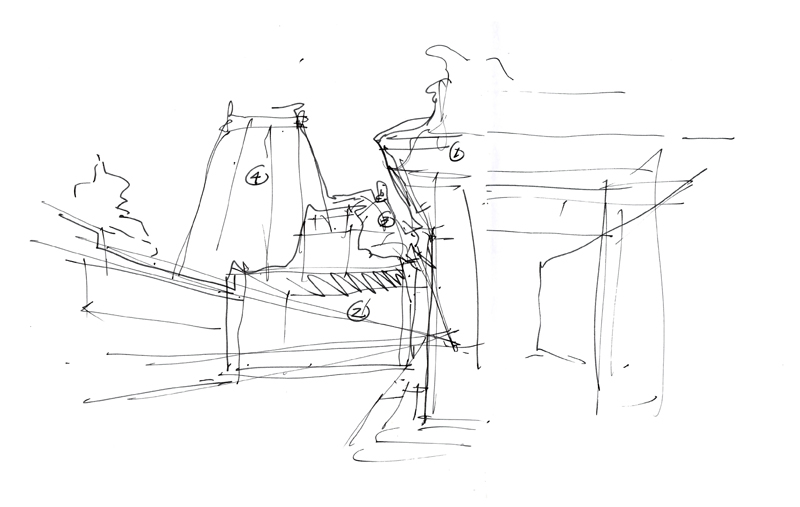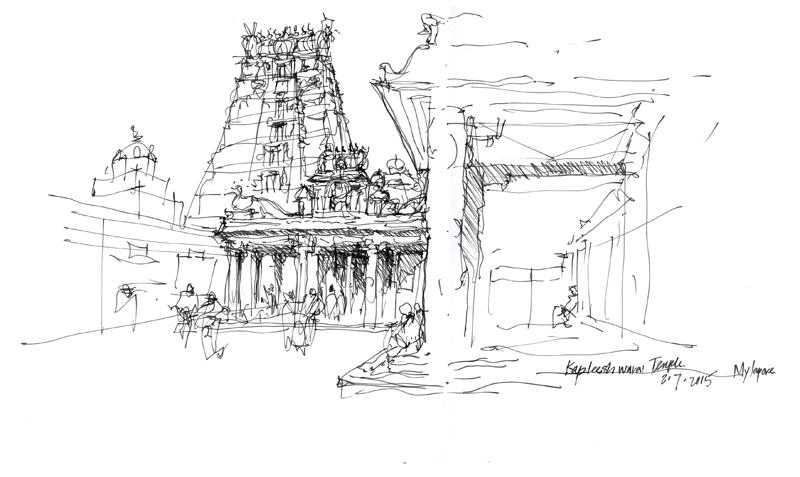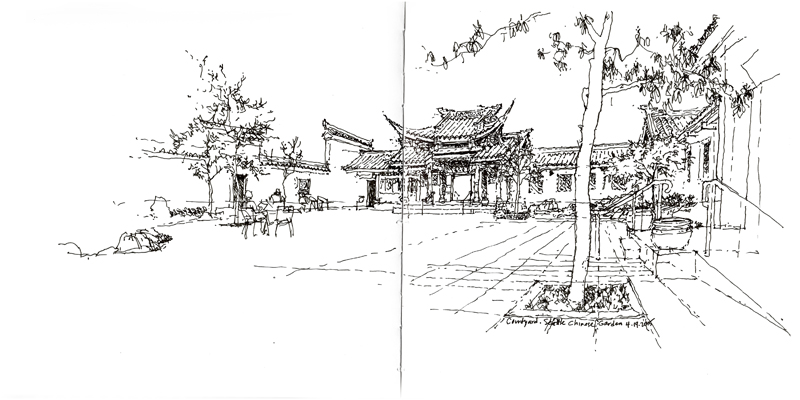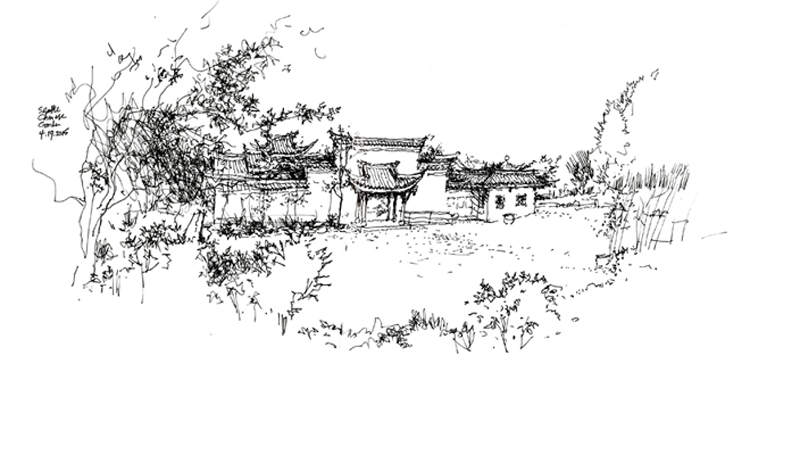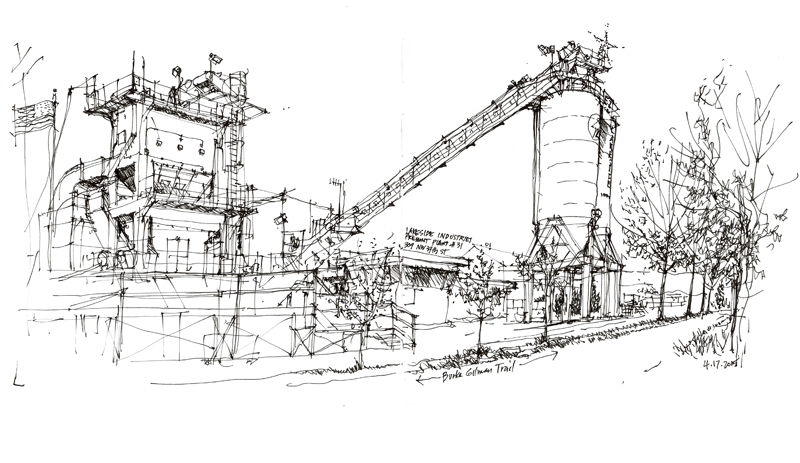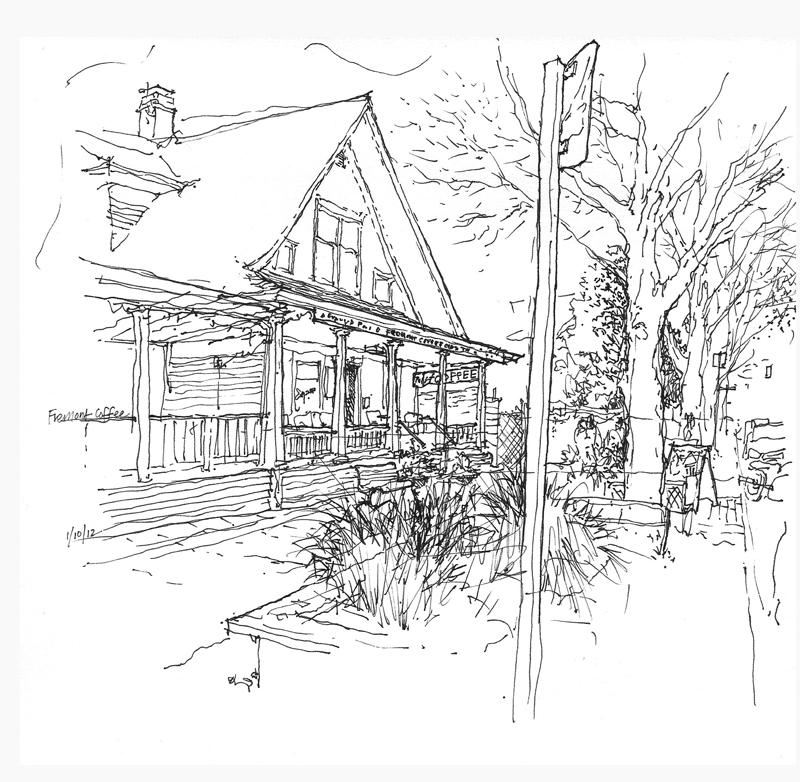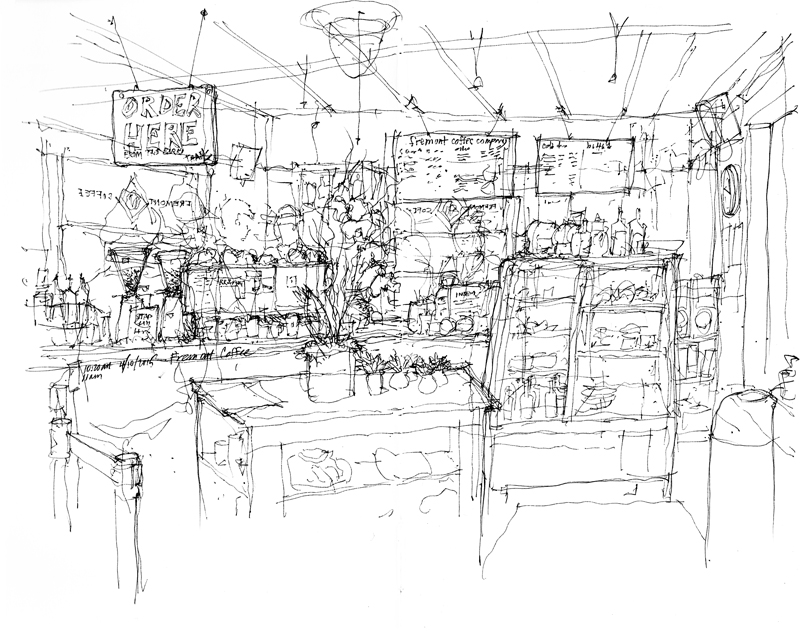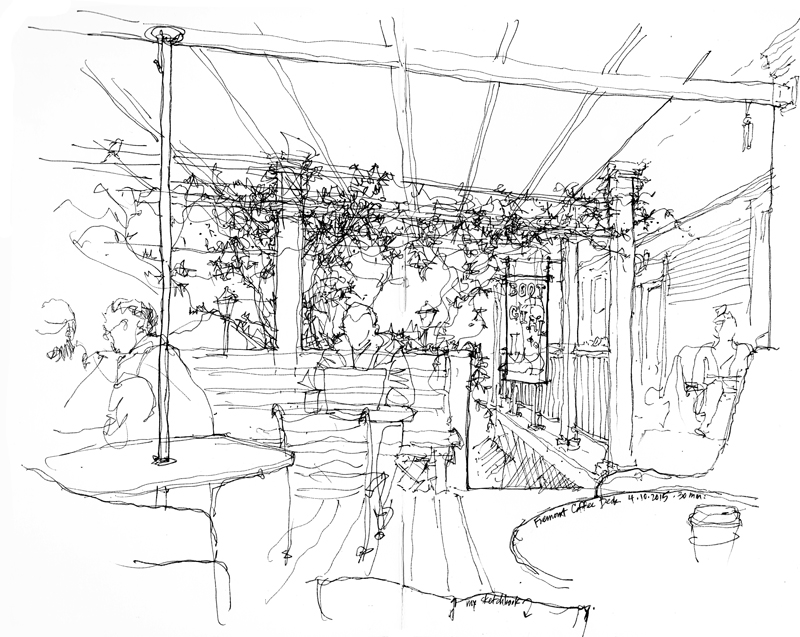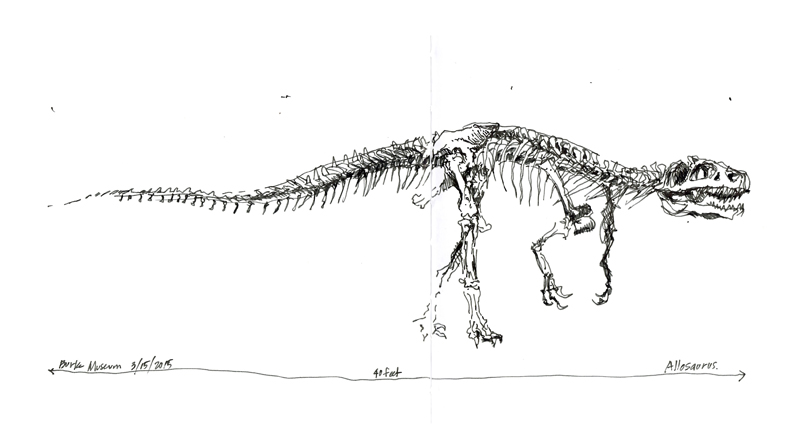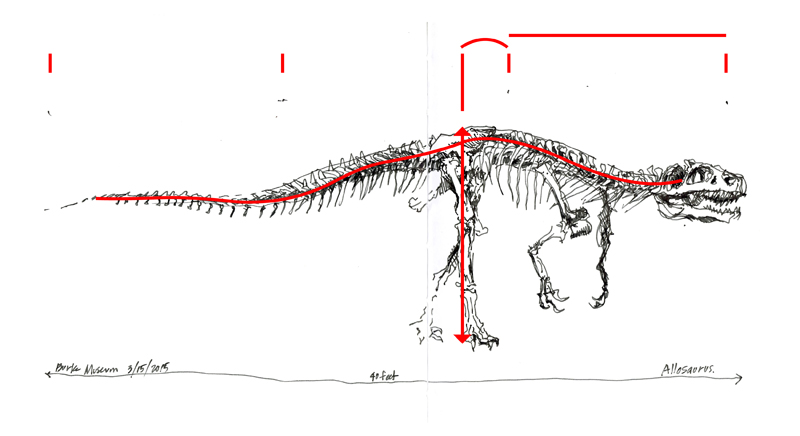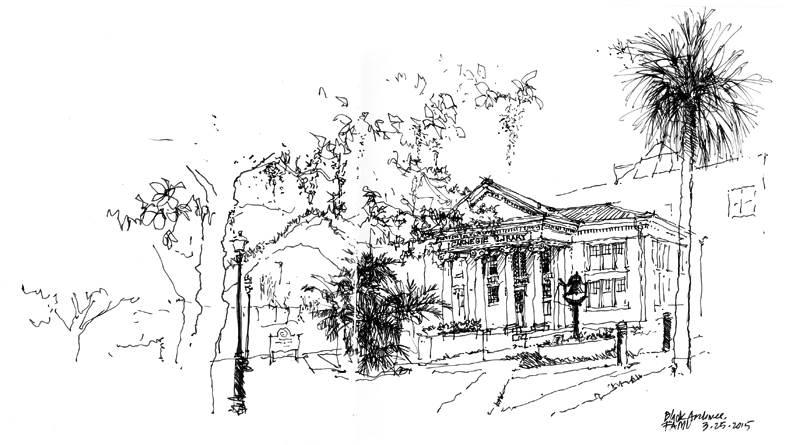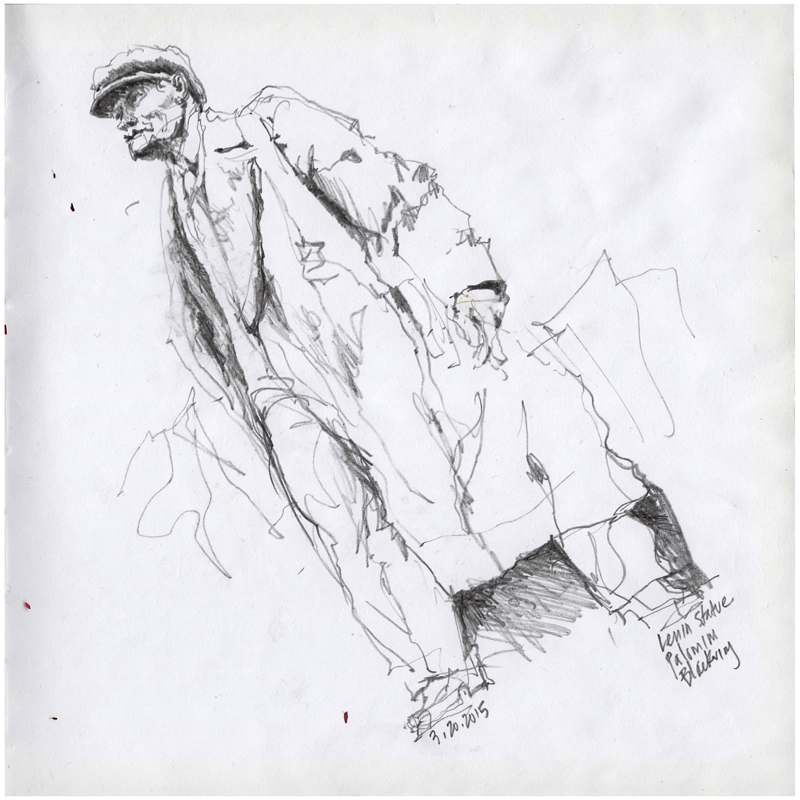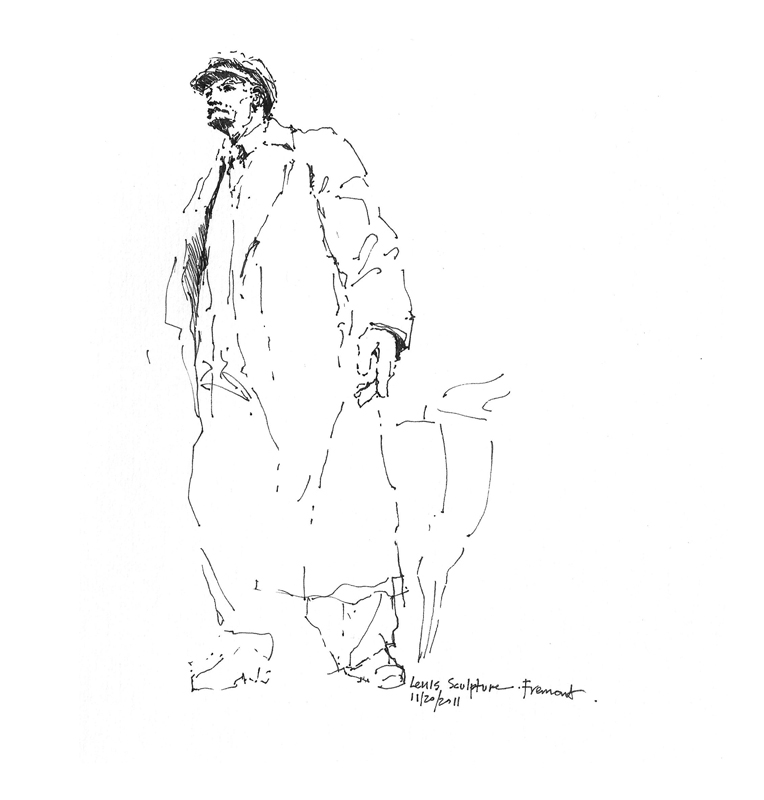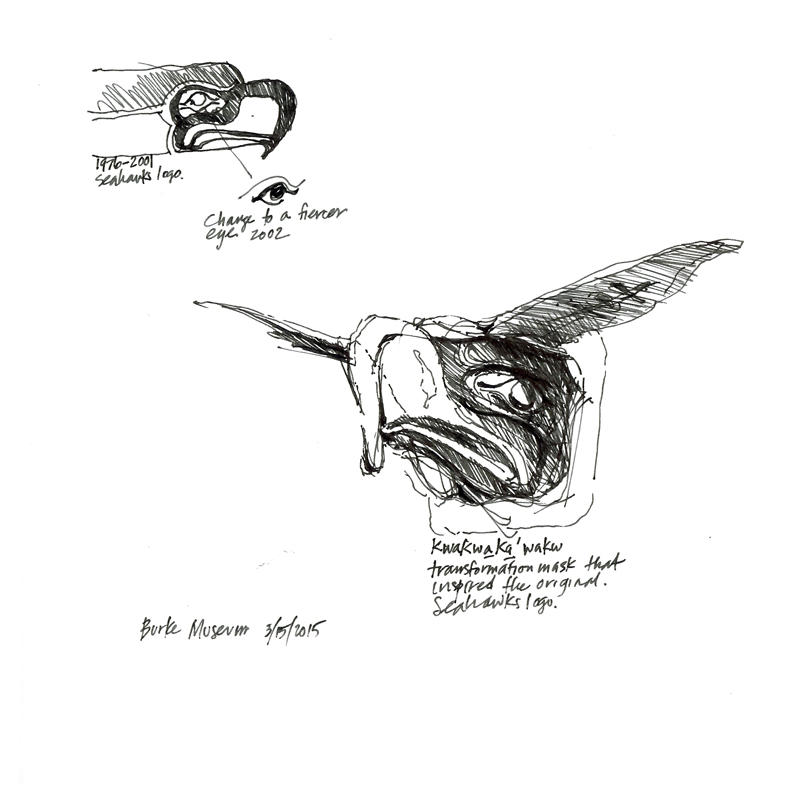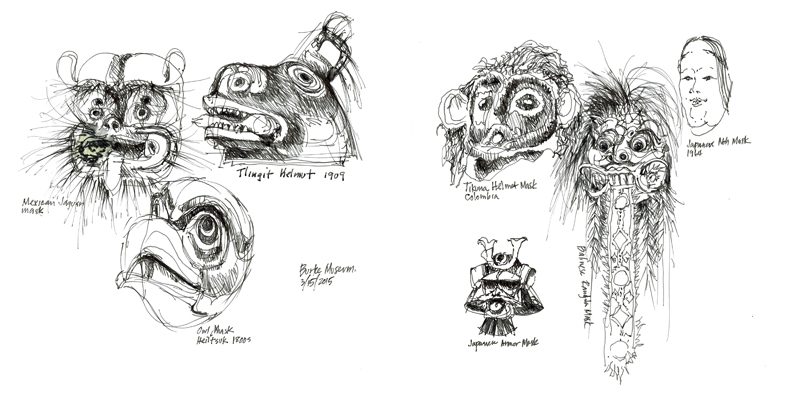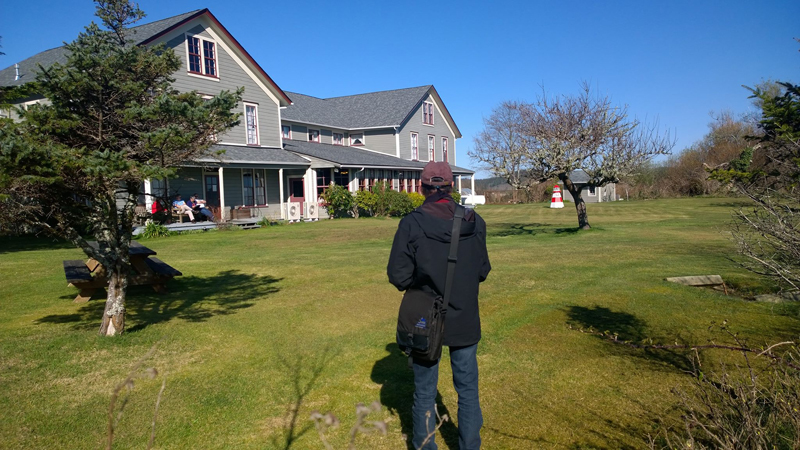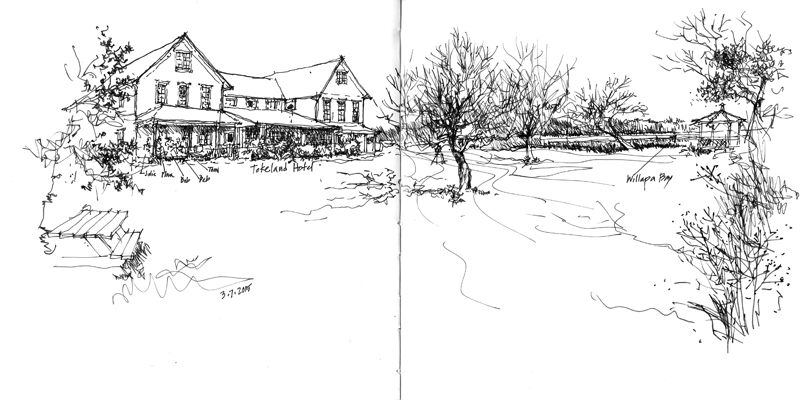Urban Sketchers Singapore and Temasek Polytechnic are hosting the 6th International Urban Sketchers Symposium this year. There’s a great lineup of faculty and presenters who will be offering workshops, lectures, and other activities from the 22nd through the 25th of July. For more information about the schedule, programming, and registration information, please visit: <http://singapore2015.urbansketchers.org>.
Layers of Depth
Heading down to Orange County, California, for a workshop this weekend.
During my workshops, when working one-on-one with a participant, I often do a demonstration of a concept in my sketchbook, such as this one describing the layers of depth that I saw at Kapaleeshwarar Temple in Mylapore, India. 1 is the foreground porch structure; 2 is the porch structure in the middle ground; 3 is the top of a structure just beyond 2; and finally, 4 is the gopuram in the distance.
This second image is a follow-up sketch demonstrating how to convey the layers of depth described in the first diagram. Describing layers of depth on a two-dimensional page relies on a discernible contrast of detail or tonal values between each layer and the next. In this case, it was a matter of suggesting detail and tonal values in selected portions of the drawing and omitting them in others.
Seattle Chinese Garden
For its regular monthly outing, the Seattle Urban Sketchers met this past Sunday at the Seattle Chinese Garden. Above is a view from within the Knowing the Spring Courtyard, completed in 2010 by artisans of the Chang Shu Ancient Style Garden Design Construction Company, from Seattle’s sister city of Chongqing.
Below is an exterior view as one approaches the courtyard from the south. The lead designer for the Sichuan-style garden, Feng Dacheng, is from the Chongqing Bureau of Parks and Greenery. Future plans call for a dense, complex mixture of plants, stone, water, and architecture, including an education center and a banquet hall with seating for 200.
Industrial Architecture
Industrial architecture, through the arrangement of geometric forms, often expresses its utility, function, and process in the most direct and honest way. This example is the Fremont Plant of Lakeside Industries, a third-generation family-owned company dating from 1952. Sandwiched between the Ship Canal and the Burke-Gilman Trail, the plant processes the movement of sand and gravel between trucks and barges
Fremont Coffee Redux
I took advantage of an ad hoc meeting of the Seattle Urban Sketchers at Fremont Coffee to sketch my favorite coffee shop, where I get my daily Americano. Above is an exterior view that I had done a couple of years ago. So today, I sketched two additional views, one of the interior and the other of the outside deck. I had a little trouble conveying the scale of the two spaces. Scale—in particular, human scale—is a difficult aspect to capture well but it is so important in describing the intimacy or expansiveness of a space.
Allosaurus Fragilis
On display at the Burke Museum of Natural History and Culture on the UW campus is this Allosaurus Fragilis, a fleet-footed predator from the late Jurassic period.
The second image below shows how I attempted to keep the allosaurus in proper proportion. I first estimated that the height of the hind legs was about a third of the dinosaur’s overall length. You can barely see the tic marks that I used to divide the length into thirds. I then used this measurement to fix the height of the hind legs. I also judged the position of the hind legs to be a little more than a third of the length from the head. Finally, I drew the curvature of the spine to guide the development of the dinosaur’s skeleton.
Being able to see and replicate proper proportions, no matter the nature of our subject matter, is an important skill in drawing.
Another Carnegie Library
Attending a symposium at the School of Architecture and Engineering Technologies at Florida A&M University, I happened upon another Carnegie Library. After FAMU’s first library burned down in 1905, Andrew Carnegie donated funds to rebuild the library. It was the first Carnegie Library to be built on a Black land-grant college campus. After a new university library was built in 1947, this building served several functions until 1976, when it became the home of the Southeastern Regional Black Archives Research Center and Museum
Palomino Blackwing
Having been given a Palomino Blackwing 602 pencil recently, I wanted to try it out. First produced in the 1930s by Eberhard Faber, the original Blackwing 602 had a firm feel yet the lead also had a softness similar to that of a 6B pencil. The 602 is said to have been favored by several prize-winning writers, musicians, and artists. The line was discontinued in 1998, but Palomino, a California Cedar Products Company with a long history in the pencil industry, re-introduced the Blackwing 602 in 2011 as well as a slightly softer version, which I used to sketch the Lenin Statue in Fremont.
As we can see, graphite pencils are capable of a variety of lines and tones but lack the incisive quality of ink lines. As a light drizzle began to fall as I drew, I also discovered that graphite pencils are capable of drawing even on slightly damp paper. For comparison, I’m reposting an ink drawing of the same subject, which I had done back in 2011.
Pen-and-ink drawings, having only black lines at their disposal, tend to be more abstract and must use hatching, broken lines, and contrast to suggest the gray tones we think we see.
Masks
The Seattle Urban Sketchers met yesterday at the Burke Museum of Natural History and Culture on the University of Washington campus. Among the museum’s collections are masks representing the cultural heritage of the Americas, the Pacific Islands, and Asia. This is the Kwakwaka’wakw transformation mask, depicting an eagle, that is believed to be the inspiration for the original Seahawks logo from 1975.
Masks have been used for millennia in the rituals and ceremonies of different cultures. Here are a few examples from the Burke Museum’s collection.
Drawing objects presents different challenges than when sketching buildings and environments. Instead of depicting forms in space and spatial relationships, we are tasked with capturing both the three-dimensional form of a mask and its unique expressiveness, whether the mask is intended to disguise, protect, or entertain.
Tokeland, Washington
Photo by Flora Goldwaithe
This past weekend, I took a road trip with Deb and friends to Tokeland, Washington, a narrow spit that juts out where the Pacific Ocean curves in to form Willapa Bay. The Tokeland Hotel where we stayed is a National Historic landmark, built in 1885 as a farmstead home and later enlarged in 1899 to become a hotel. Abandoned in 1984, the hotel was restored in 1989 and is now a tranquil getaway in southwest Washington. This is a panoramic view of the “front” of the hotel, set in a meadow facing onto Willapa Bay.



